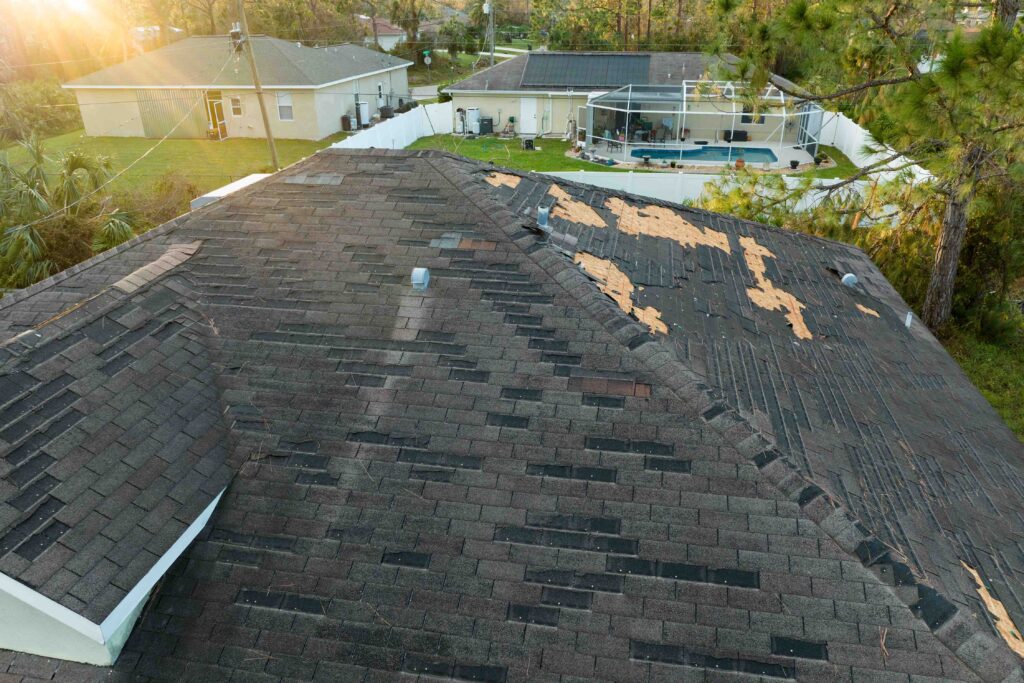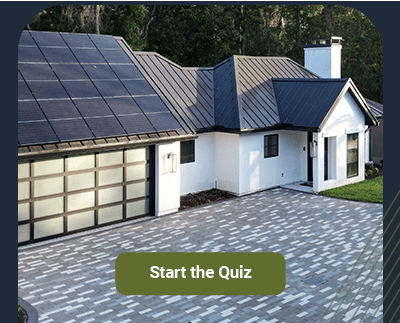Florida homes face year-round exposure to weather conditions that are tough on roofs. From blistering sun to pounding rain and strong winds, the demands on roofing systems here are greater than in most other regions. That’s why it can feel frustrating when a roof that should last 20 or more years starts showing signs of failure much sooner.
The good news is that many of these early failures are preventable. By understanding the most common roofing issues in Florida and learning how to address them proactively, you can protect your home, save money, and extend the lifespan of your roof with confidence.
Understanding Why Florida Roofs Wear Out Faster
The Impact of Year-Round Weather Exposure
Roofs in Florida rarely get a break. Nearly every season brings extreme elements, whether it’s high humidity, strong sun, or tropical wind and rain. The materials used in roofing systems naturally wear down over time, but the pace is faster when they are exposed to constant stress from the environment.
UV rays from the sun can weaken roofing materials, making them more brittle and prone to cracking. Meanwhile, heavy rains, which are common during Florida’s rainy season, place pressure on seals and underlayment. Without routine maintenance and inspection, even minor issues caused by the weather can develop into major problems.
How Florida’s Climate Accelerates Aging
It’s not just the heat and rain that create problems. For homes near the coast, salt in the air adds another layer of risk. Salt can corrode metal elements of a roof, including flashing and nails, and it can compromise the waterproof integrity of the roofing system over time.
The combination of heat, humidity, salt, and wind creates a unique environment that accelerates the aging of any roofing system. Choosing roofing materials that are designed to perform well under these conditions is one of the first steps toward preventing early failure.
5 Common Roofing Issues Florida Homeowners Face
Missing or Damaged Shingles After Storms
After a storm, it’s not unusual to find shingles in your yard or notice patches on your roof that look different than the rest. High winds often lift or tear shingles from the roof surface, leaving the materials underneath exposed to moisture. Even if shingles appear to be intact, wind can loosen them enough to create small gaps that allow water to seep in over time.
Staying alert to signs of storm damage can help you catch these problems early. If you notice anything out of place after a storm, it’s smart to schedule a roof inspection right away. The sooner you address missing or damaged shingles, the more you reduce the risk of a larger leak or structural issue.
Leaks and Water Intrusion
Roof leaks are one of the most common issues homeowners face in Florida. Often, the first clue is a ceiling stain, a drip in the attic, or a musty smell. These signs may seem minor, but they point to water entering your home through a compromised area of your roof.
Because moisture can travel behind walls and under floors, it is important not to ignore early indicators. Scheduling roof leak repair as soon as a leak is detected can help avoid mold, rot, and costly interior repairs. Even a small leak can create a big problem if left unchecked.
Poor Installation or Low-Quality Materials
Sometimes, the problem isn’t the weather at all. A roof may fail early simply because it wasn’t installed properly. One of the most common issues is missing or improperly installed flashing, which is the thin metal material placed around roof features like chimneys, vents, or where two roof sections meet. Flashing plays a critical role in directing water away from vulnerable areas, so if it’s missing or damaged, leaks are almost inevitable.
Poor ventilation is another issue that can shorten the life of your roof, as trapped heat and moisture can lead to premature aging of materials. And using lower-quality shingles or underlayment may save money up front, but it often results in more frequent repairs or early replacement.
In Florida’s climate, where roofs face constant exposure to heat, rain, and wind, installation mistakes don’t stay hidden for long. Choosing professionals who are trained, experienced, and backed by credentials makes a real difference. A team like HW Contracting, who understands Florida’s building codes and roofing demands, can help ensure your roof performs as it should for years to come.
Clogged or Damaged Drainage
Florida’s frequent rain makes roof drainage more important than ever. When gutters and downspouts get clogged with leaves or debris, water can back up and pool along the edge of your roof. This leads to moisture damage, wood rot, and deterioration of the roof deck and fascia.
Regular gutter maintenance and checking your roof’s drainage system after a storm can prevent water from settling where it shouldn’t. Make sure water is flowing away from your home, not seeping back under the roofing material.
Lack of Inspections After Major Storms
One of the most overlooked causes of early roof failure is simply not knowing there’s a problem. After a storm, damage might not be immediately visible from the ground. Shingles could be slightly lifted, flashing could have separated, or seals might be compromised. These small problems often go unnoticed until they cause much bigger issues.
That’s why scheduling a professional hurricane damage roofing inspection after a major storm is a smart habit. A trained roofer can identify hidden damage and recommend repairs before problems escalate.
How to Prevent Early Roof Failure
Schedule Regular Inspections and Maintenance
Routine roof inspections are one of the best tools you have to prevent early failure. Even if everything looks fine from the outside, a professional can check for loose flashing, signs of wear, minor leaks, and other early warning signs that might not be obvious to the untrained eye.
Partnering with a trusted team for residential roofing repair helps you stay ahead of problems. Scheduling an inspection in the spring and again in the fall keeps your roof in good shape and gives you peace of mind going into the storm season.
Take Action After a Storm
It’s easy to assume your roof is fine if there are no visible leaks after a storm. But wind, hail, and debris can cause damage that leads to leaks weeks or even months later. After any significant weather event, make it a point to walk around your home and look for signs like missing shingles, dented vents, or branches resting on the roof.
If you notice anything out of the ordinary, call a professional for storm damage roof repair right away. Prompt repairs not only prevent further damage but also help keep your warranty and insurance coverage valid.
Know When to Repair vs. Replace
It’s not always clear whether a roof needs a simple repair or a full replacement. If your roof is older, has been repaired multiple times, or is showing widespread signs of wear, it may be more cost-effective to replace it entirely.
Making this decision can be tough, but it helps to hear from someone who’s been there. This homeowner’s experience with roof repair vs replacement can offer perspective as you consider the best option for your home.
Making Your Roof Last Longer in Florida
Partner with Experienced Professionals
A well-built roof starts with the right contractor. Local experience, proper licensing, and a commitment to quality make all the difference. When you work with a team that understands the unique demands of Florida homes, you get a roof that performs better and lasts longer.
Take time to read verified reviews before choosing a roofing partner. Feedback from other homeowners can help you find a team that’s known for professionalism, clear communication, and great results.
Smarter Roofing Choices Pay Off
Investing in higher-quality materials and thoughtful upgrades pays off in the long run. Whether it’s choosing shingles designed to reflect heat, adding attic ventilation to prevent moisture buildup, or installing a stronger underlayment, these enhancements help protect your roof from early wear.
For a broader look at how material choices and design impact longevity, take a look at why Florida homes need smarter roofing choices. A little planning up front leads to years of reliable protection.



